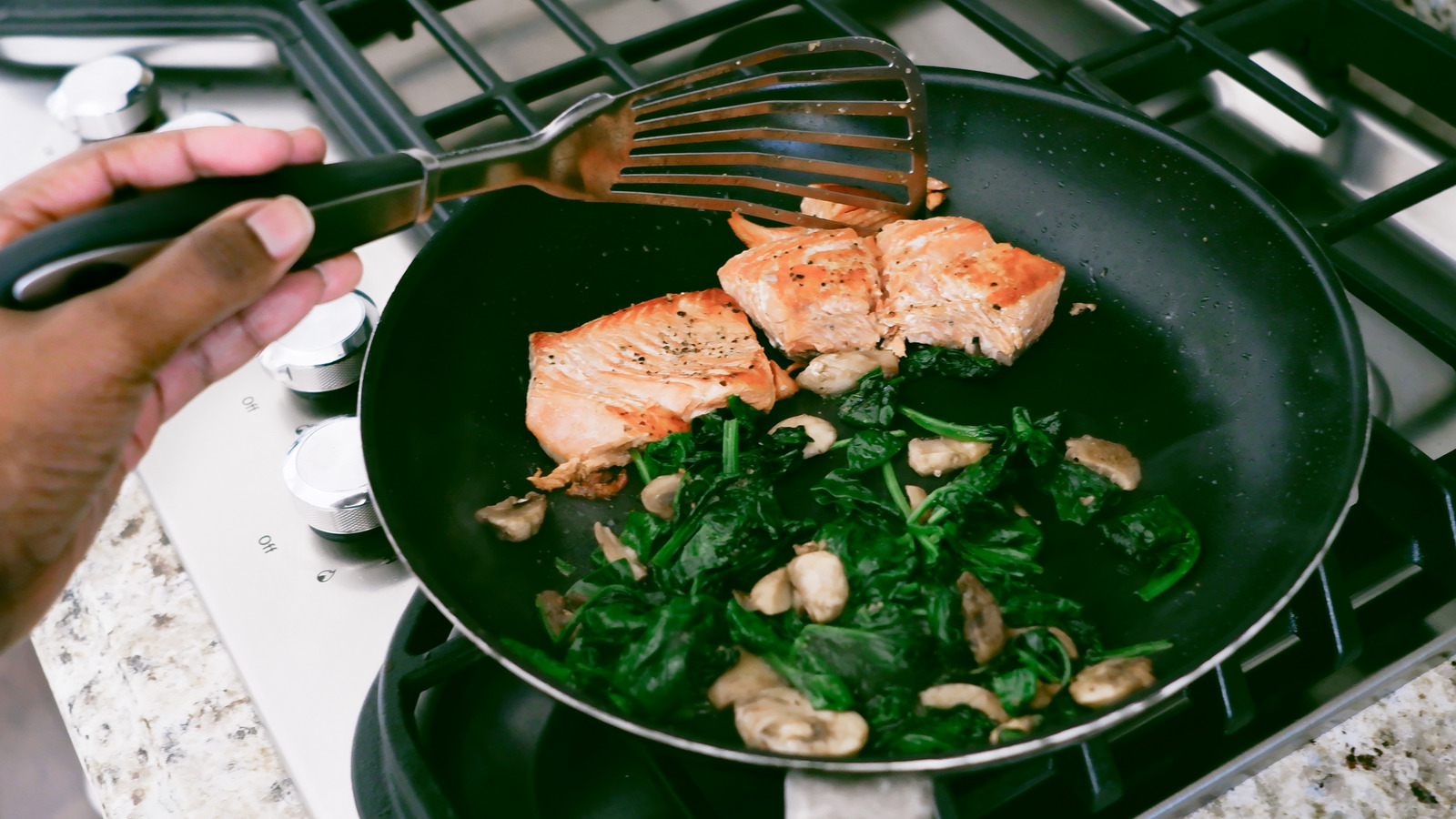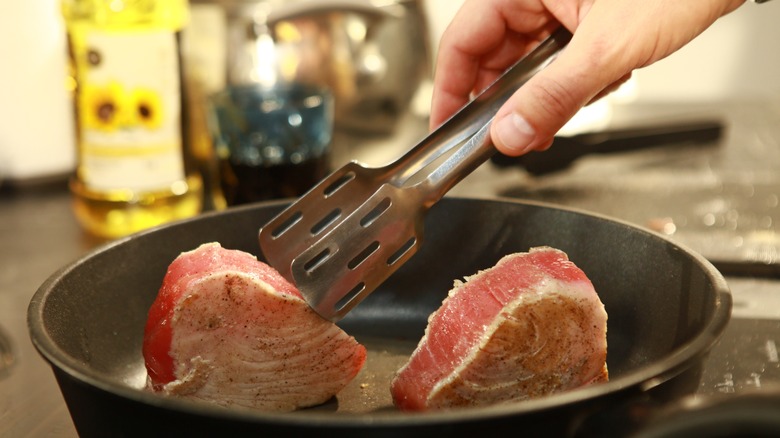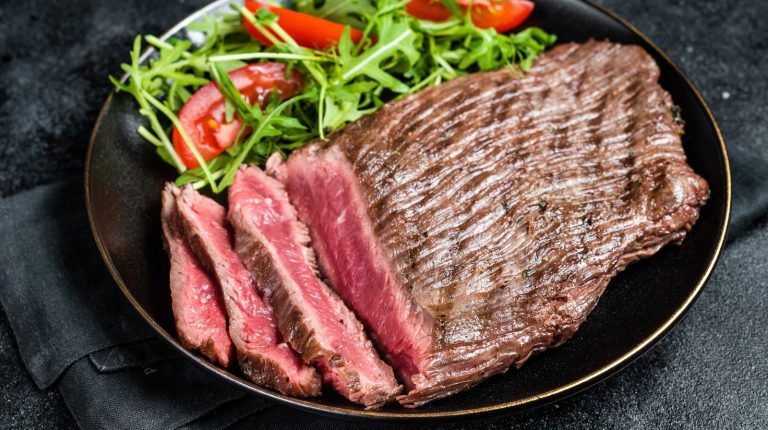We may receive a commission on purchases made from links.
Preparing fish can feel like a daunting endeavor; there are many big mistakes to avoid. The protein is delicate, often sticks to the cooking surface, and has a composition that makes nailing the ideal doneness difficult. Subsequently, even the most seasoned chef might second guess when a fish fillet is ready to take off the heat.
Of course, the most trusty method is to employ a thermometer: The USDA recommends cooking fish to at least 145 degrees Fahrenheit. Yet there are some occasions where such a tool — and other helpful tech — isn’t available. Maybe you’re grilling, enjoying some fish while camping, or simply can’t find a thermometer laying around. Well, in such a scenario, you’ll want to match the feel of the fillet with the area between your thumb and index finger.
Similar to the finger technique used to gauge steak, the firmness of your grip correlates to the fish’s interior. If your hand is simply relaxed, that area of skin between your thumb and index finger responds to the touch like a seared fish fillet with a raw interior. Start curling up your fingers, and the sensation mimics fish cooked to a medium. Once it’s a fist, the feel’s analogous to medium well. And if the fish mirrors the sensation of a fully clenched hand, then it’s well done. While not the most precise method, it’s a better starting place than exclusively a guess and check.
Employ a finger test to estimate the doneness of meaty fish
To avoid any cooking disappointments, keep in mind the limitations of the technique. For one, the method is best reserved for meatier fish like salmon or tuna, which you’ll delineate into grades of rare or medium doneness. Conversely, whenever you’re preparing white fish, the aim is simply to achieve a flaky, opaque interior; meaning gauging readiness comes with a different approach. If you’re still keen to use a tactile test, this type of fish is ready when it feels like the tip of your nose, although it’s better to inspect for flaking visually.
Furthermore, meaty fish like salmon and tuna are more often consumed raw, which makes a potential inaccuracy with the test less stressful. High quality tuna and salmon present a smaller (although a still existent) parasite risk. Meanwhile, freshwater fish increase the risk of more foodborne illness; they should be more vigilantly cooked to 145 degree Fahrenheit guidance. So assess the fish on hand prior to using the technique — but you may want to purchase a AMMZO Digital Read Thermometer for certain species.
And as with cooking other types of proteins, experience is a huge benefit. So don’t rule out using a test fillet to cook fish, either. By the time you’ve done several rounds of salmon on the same cooking surface, the simple finger poke will be all you need to know exactly how the interior appears.





